 AgriFutures Goat Fibre Horizon Scholar Ailish
AgriFutures Goat Fibre Horizon Scholar Ailish
My time as an AgriFutures Goat Fibre Horizon Scholar
Ever since I was young, I wanted to be a veterinarian and so that’s what I studied. Having now completed my undergraduate double degree of Animal and Veterinary Bioscience (Honours) at the University of Sydney, my passion area has honed in on livestock veterinarian practices.
My undergraduate degree exposed me to many opportunities, including going to the Dairy Research Foundation Symposium last year where I met an AgriFutures Horizon Scholar. This casual meeting catapulted my career and led me to apply, and ultimately gain, a scholarship in the 2024 cohort.
My introduction to the goat fibre industry came when my supervisor, Emily from AgriFutures, suggested I complete a two-week placement at Currajong Common.
I completed this placement during my university break in June and July this year, and here’s what I learned.
A day at Currajong Common
Currajong Common is a family-owned operation out of Burragate NSW where the Forsdick family run a 450 head Angora goat herd − focused on producing high-value Mohair fibre for high-end European fashion markets.
To produce the high quality fibre, Grant and Jenny Forsdick must ensure the health and productivity of their mob. That’s where I came in.
My days started by checking out the hospital herd in the shed, feeding the whole mob − both babies and adults − and then taking them out to the paddocks for the day. All of this was completed before my first coffee!
I’d then work through tasks including monitoring sick animals and providing updates to the Forsdicks, as well as walking the goats up and down the paddocks to ensure there were no obvious signs of lameness or loneliness in the mob.
One of the highlights for me was oral drenching − formulating copper oxide wire bolus and administering these to the goats to ensure they receive essential nutrients in the correct dosage.
My days ended much like my mornings − checking the hospital herd and bedding animals down for the evening.
Over dinner with Grant and Jenny in the homestead, I would hear more about current affairs and what’s happening in the goat industry.
Lessons in goat fibre
Before my placement, I was unaware of the diversity within the goat industry. I’d worked with goats from a husbandry and welfare perspective but hadn’t had any exposure to fibre production.
I assumed the fibre industry was similar to the Australian wool industry, in terms of classing and processing, but I was very quickly corrected.
Over the two-weeks of my placement, I learned a lot of the ‘ins and outs’ of the Mohair fibre industry, including classification and processing in South Africa for sale into Europe. Overall, my experience with the Angoras really solidified my passion for small ruminants, and their health and welfare. The Angora goats on the property were beautiful and had such a lovely temperament. The hands-on aspect of the hospital herd was also a highlight.
I was exposed to a range of interesting illness and signs of diseases and learned new triaging skills. For example, many worming issues may present as lethargy and anaemia, so I learnt how to spot and triage these symptoms. Another interesting case I got to work through was the potential diagnosis of Polioencephalomalacia (PEM) or Listeriosis and, subsequently, watching the animal recover after treatment.
The experience with the hospital herd has given me a broad range of skills and increased my vigilance towards signs exhibited by small ruminants. I believe this will play a big role in my approach to my studies and career.
My future in industry
Veterinarian availability is limited in rural and remote regions and I’m passionate about shaping my career to support producers like Currajong Common to have access to affordable animal health care.
I learned a lot about practical on-farm management for internal parasites, flood prevention and management, as well as the nature of the Mohair industry. The experience also made me appreciate that farm and animal health management is a lot to juggle and that it really requires a multi-disciplinary approach.
I didn’t feel like I worked a day in my placement. The experience was so positive and my newfound appreciation for ruminants has reinforced my belief in becoming a livestock veterinarian. I can’t wait to do my bit when my career kicks off.



